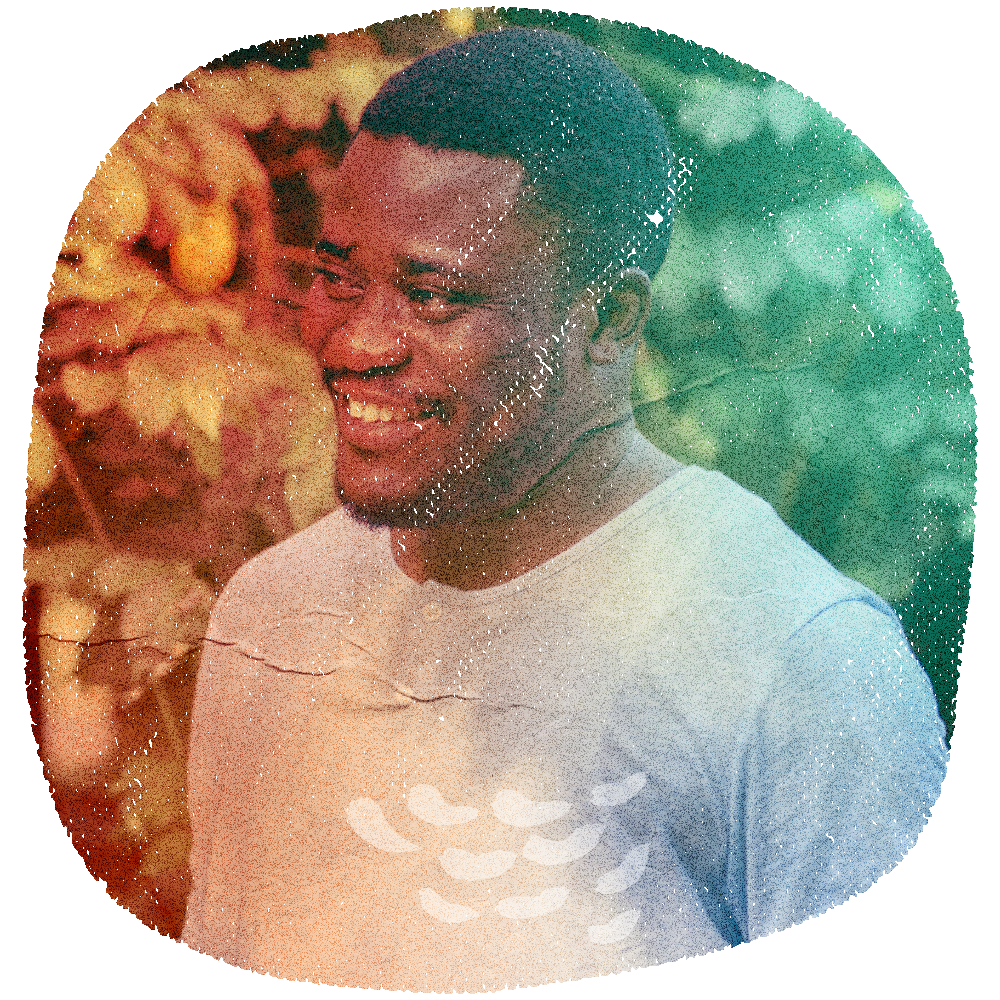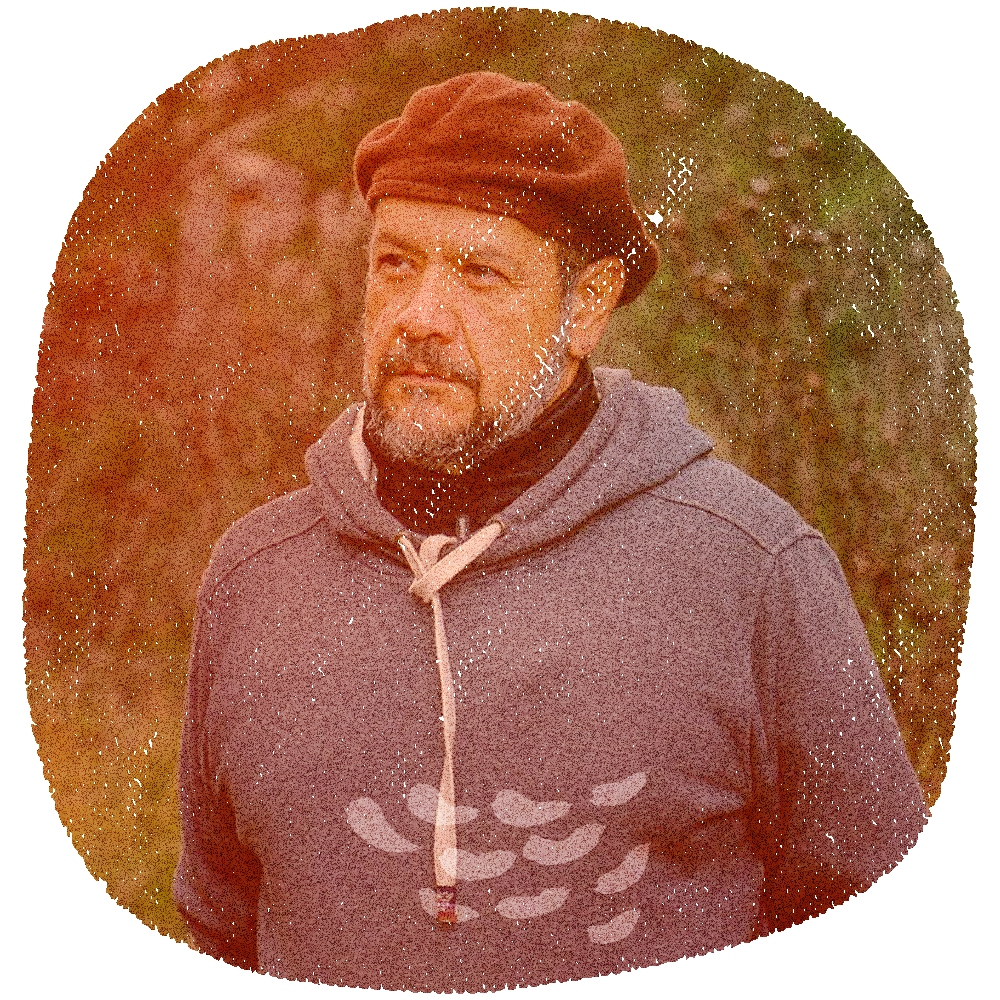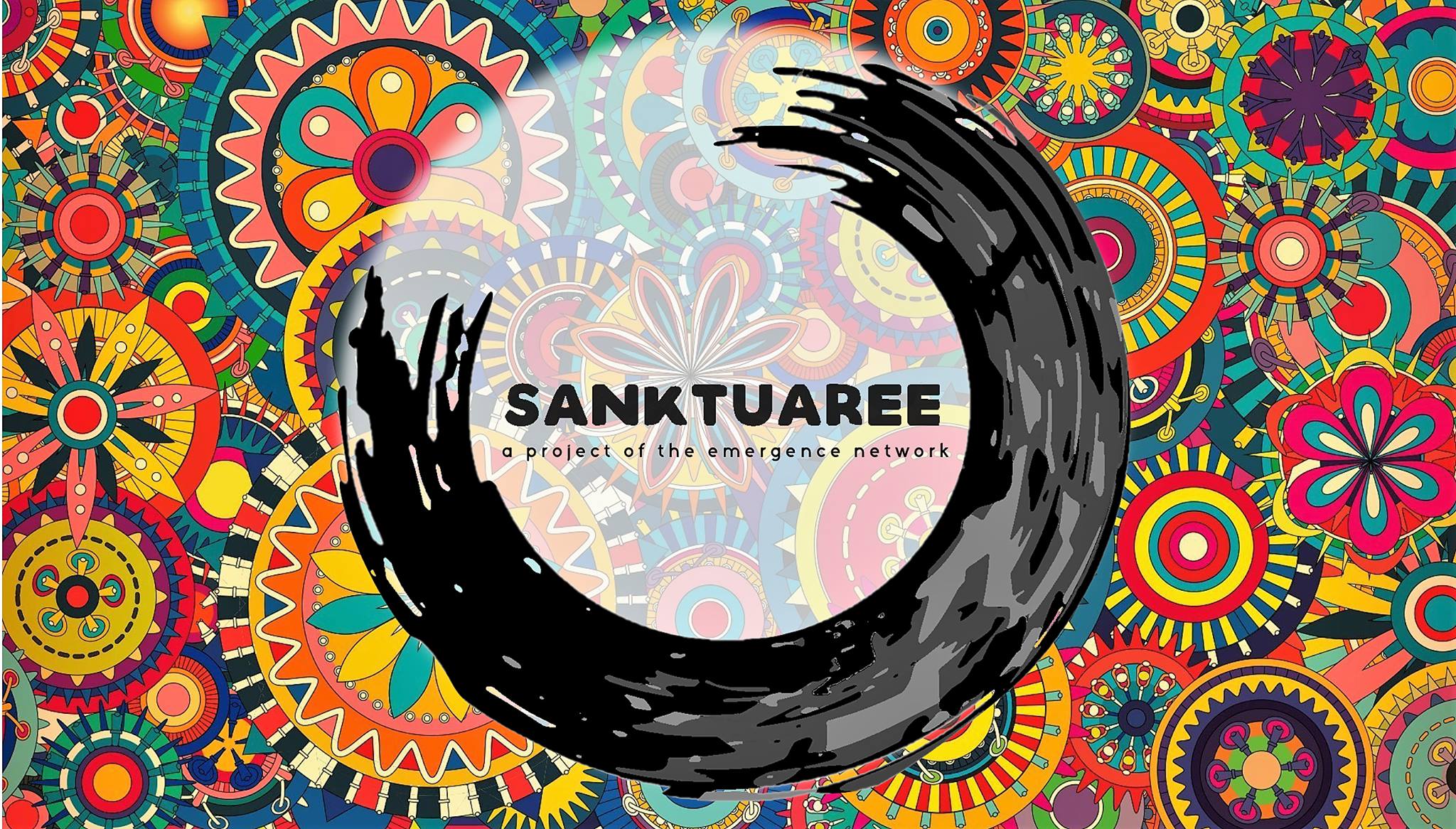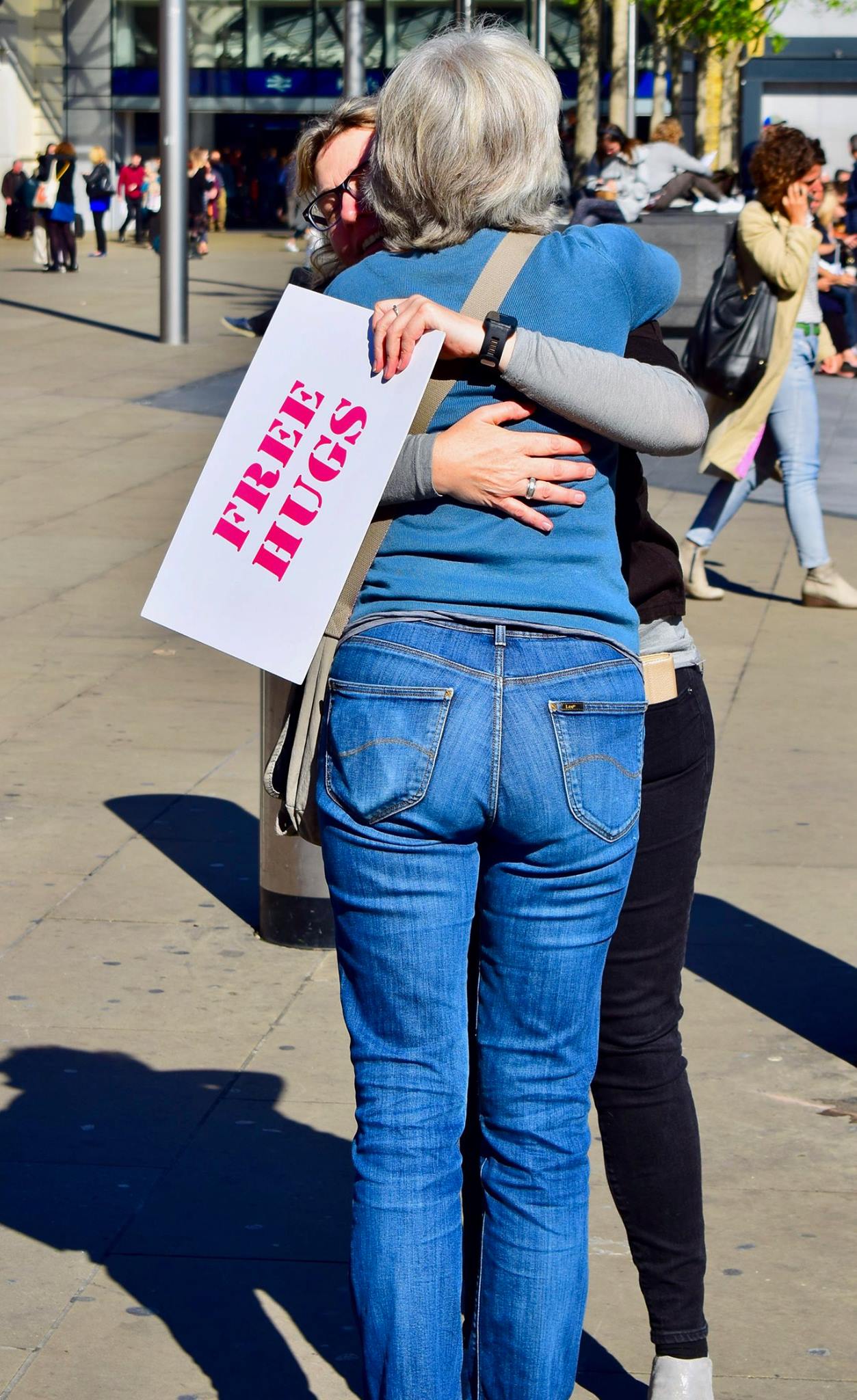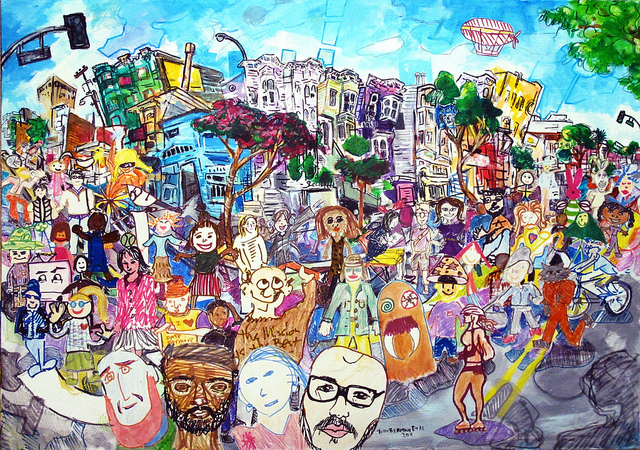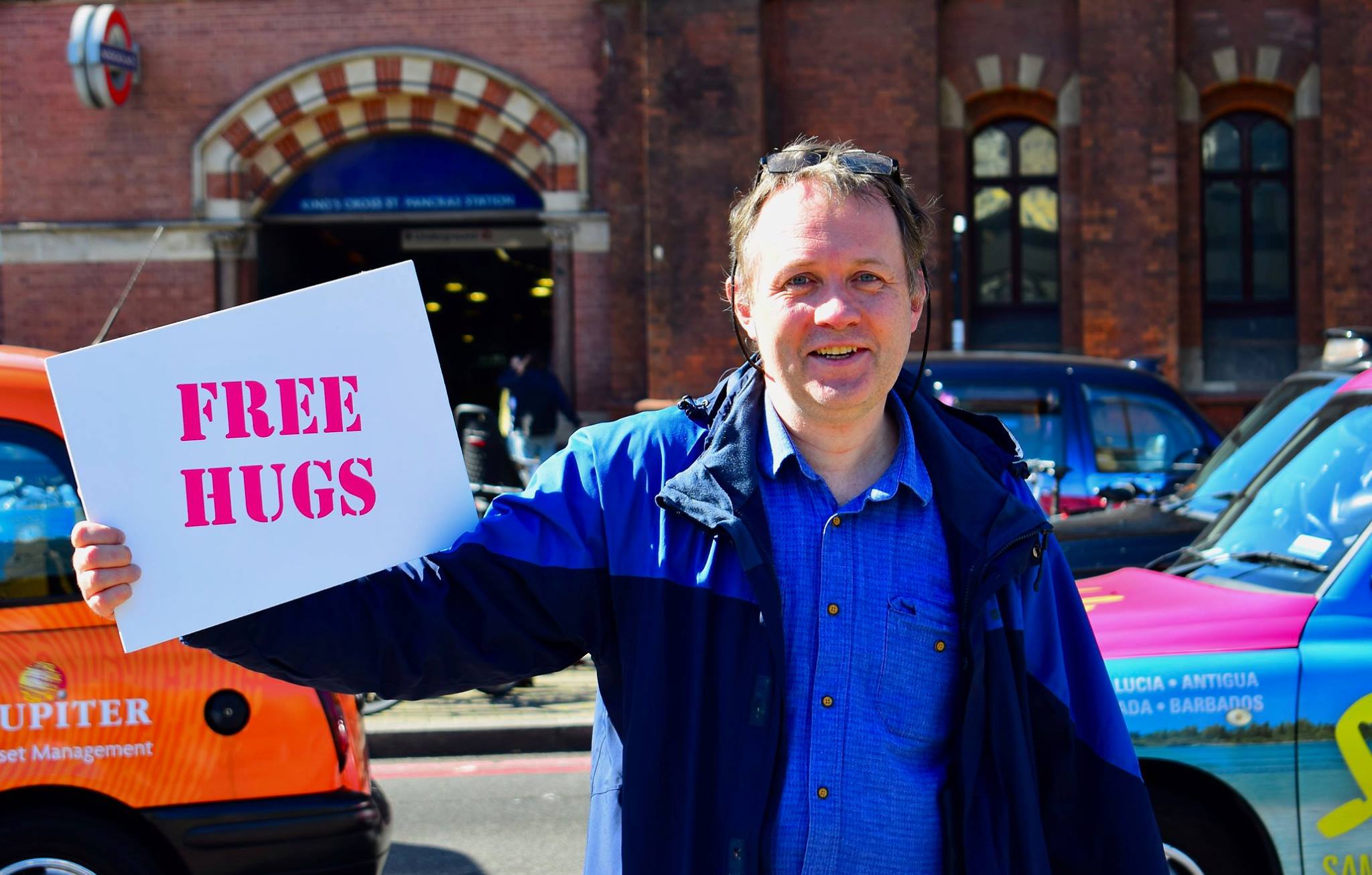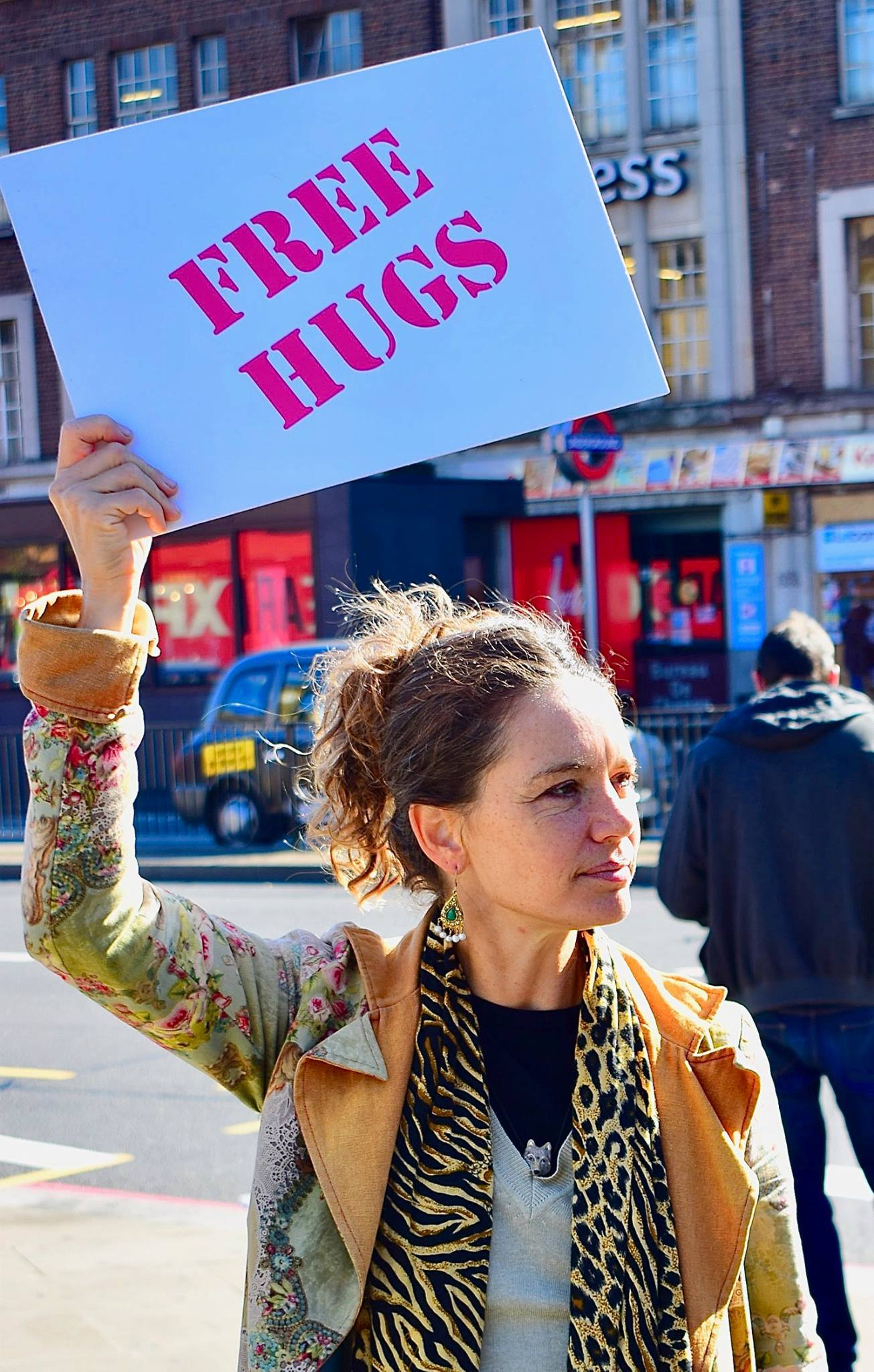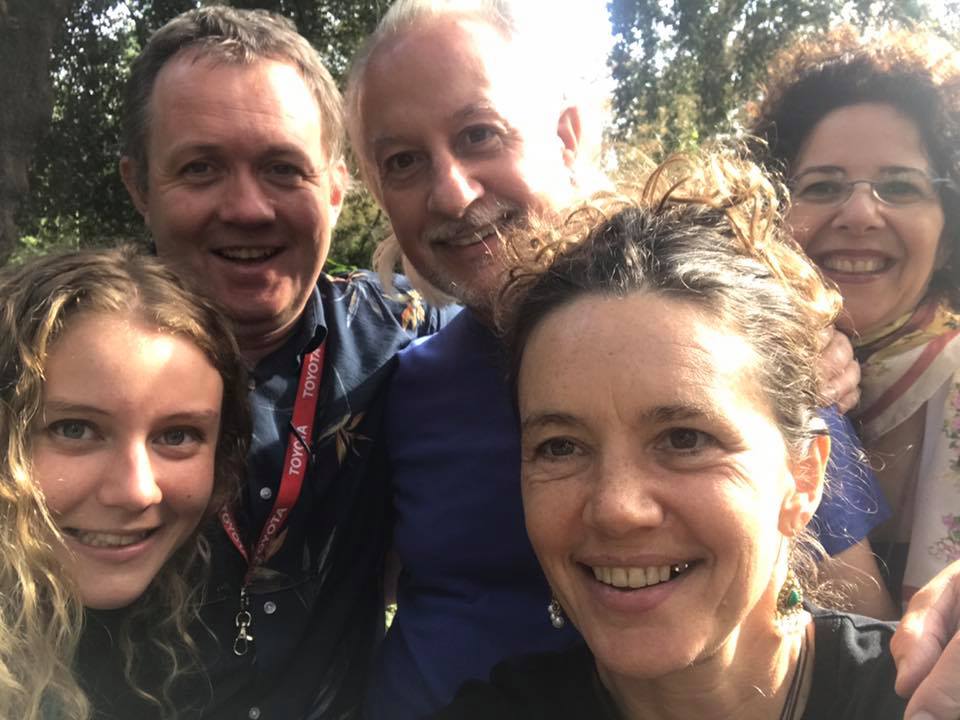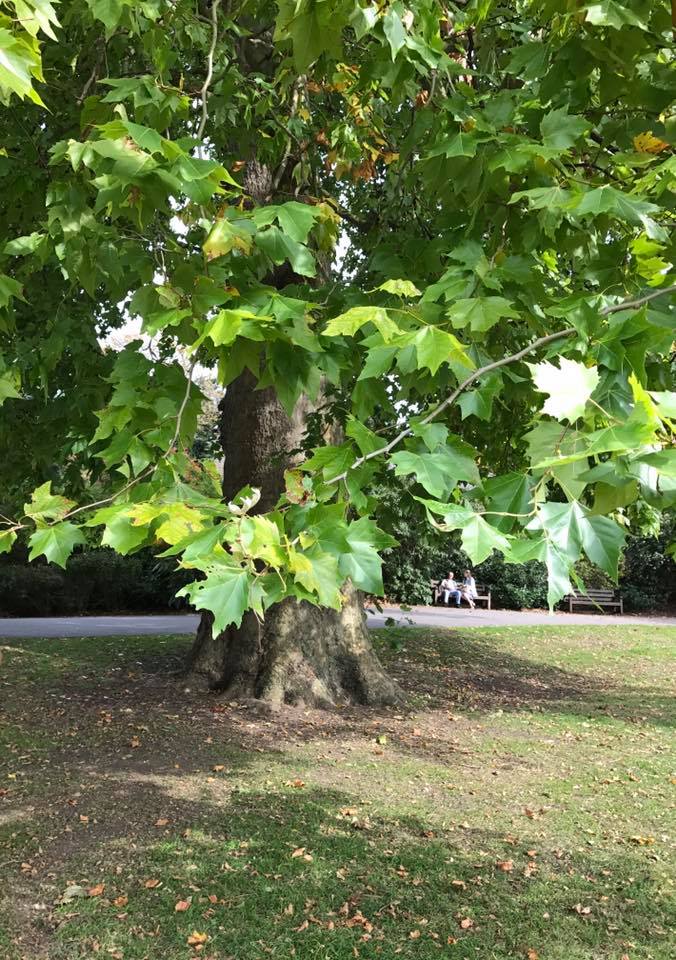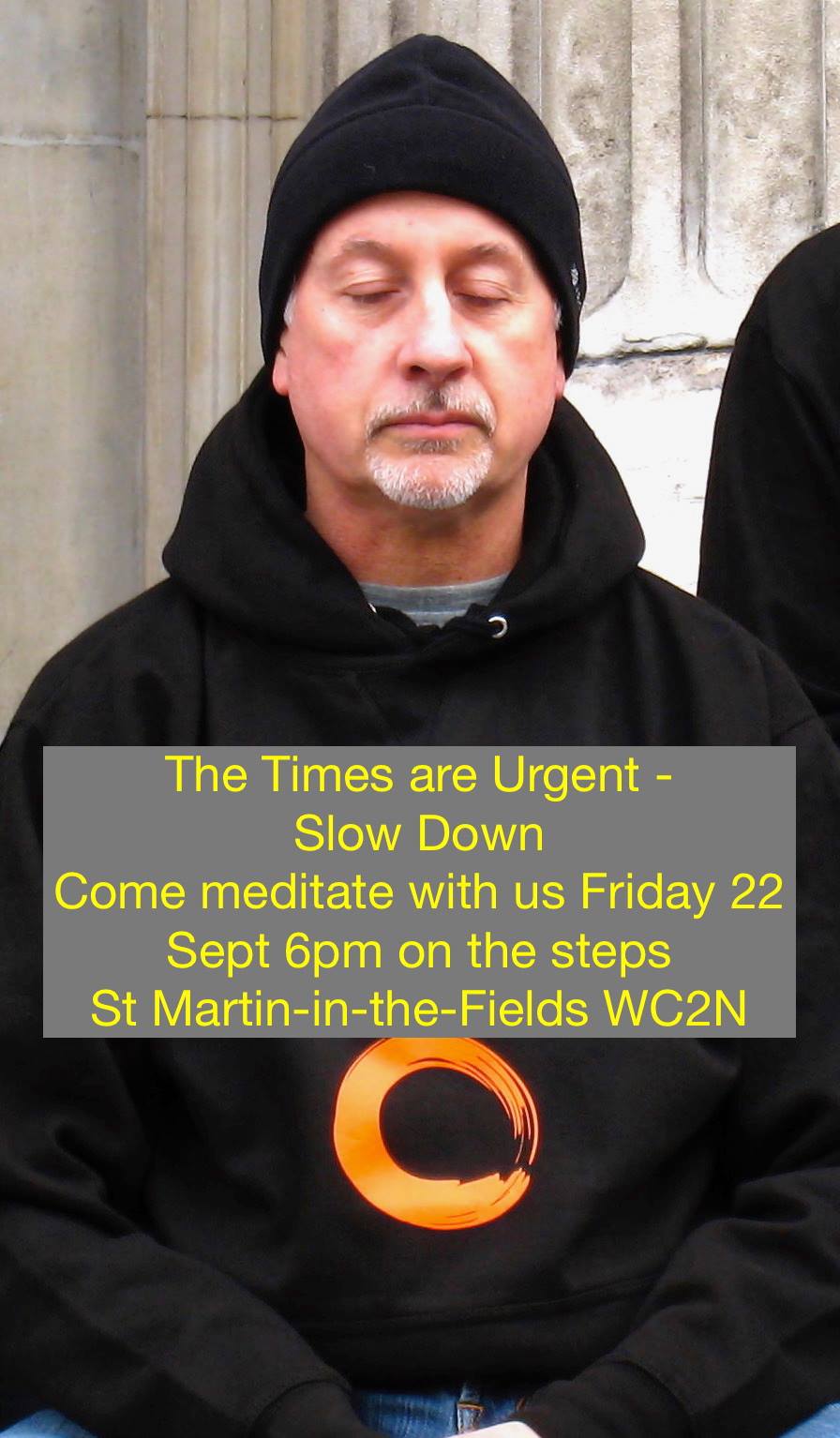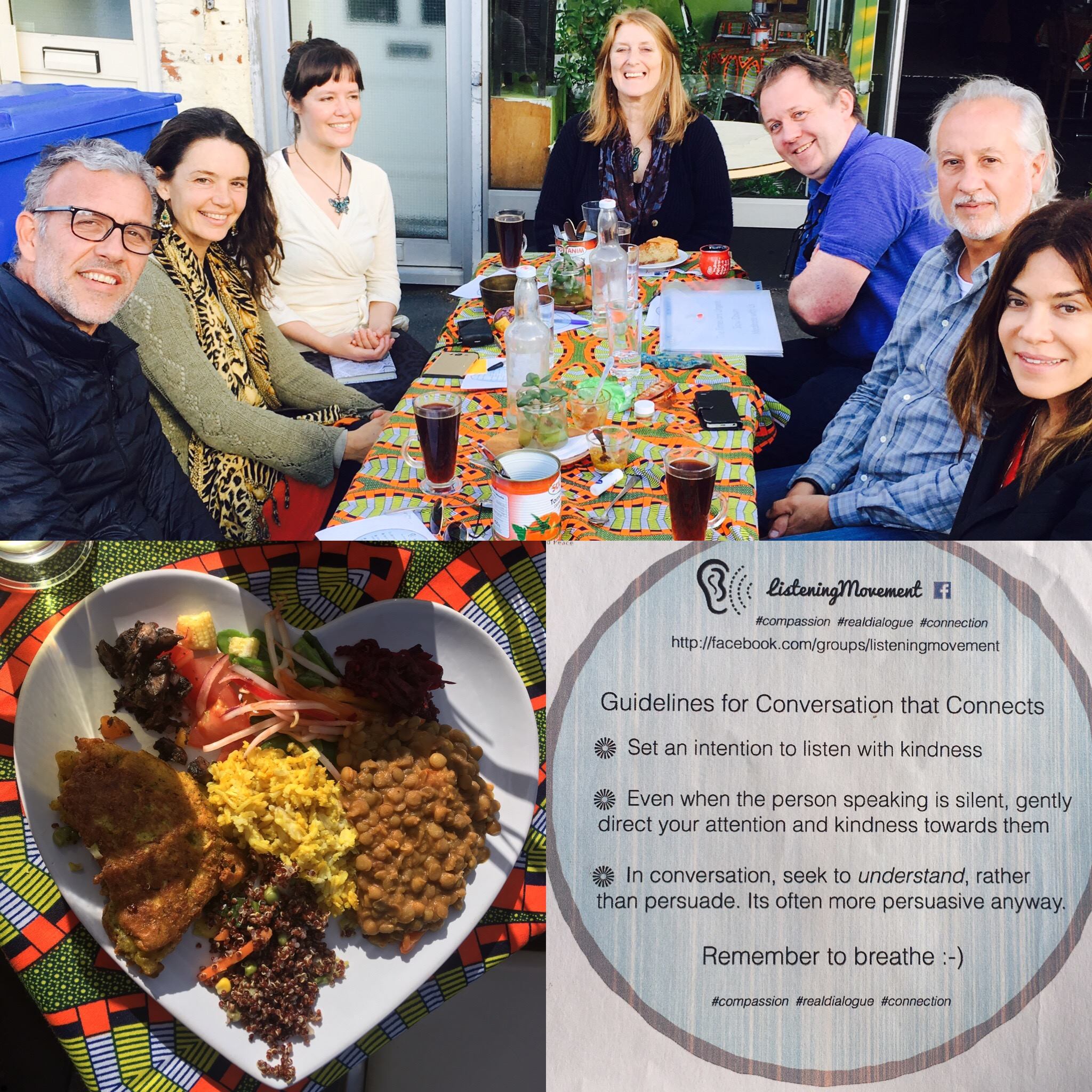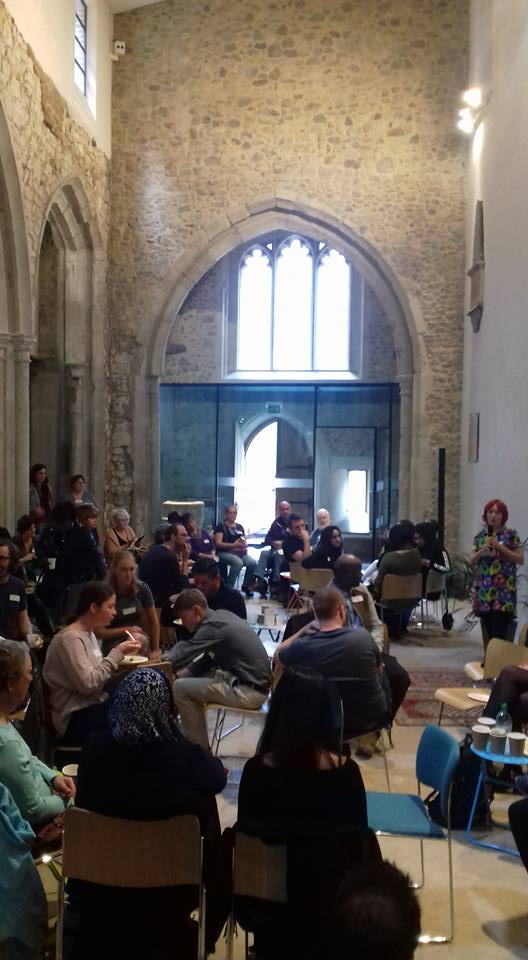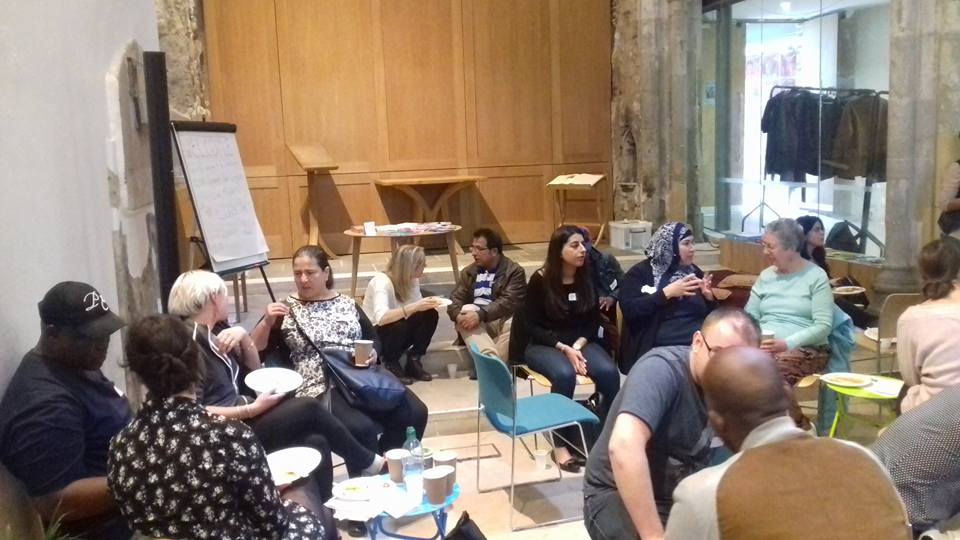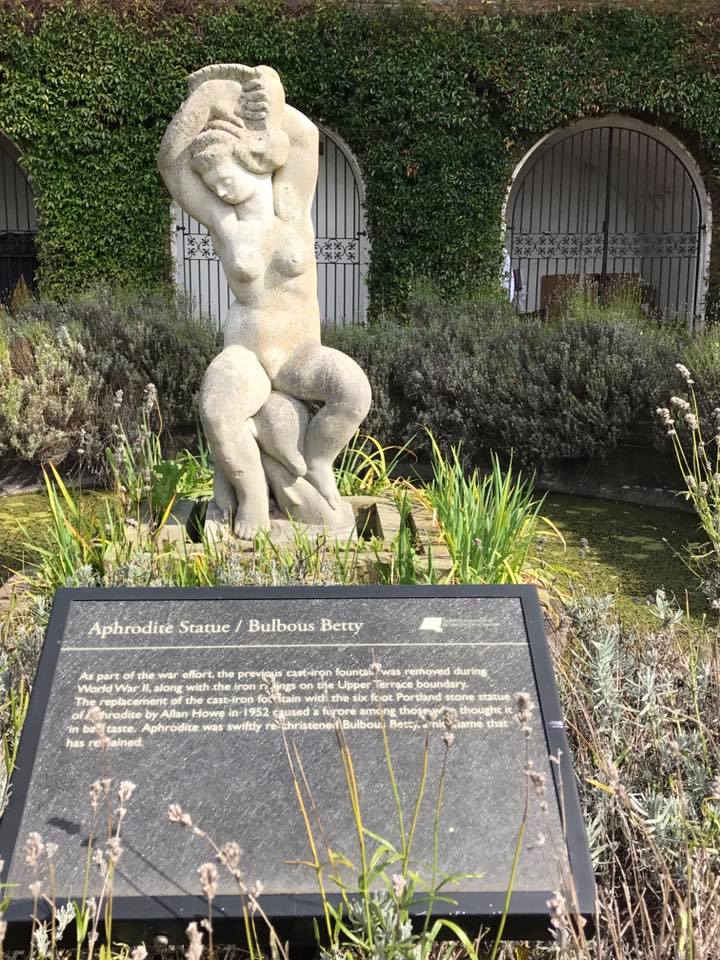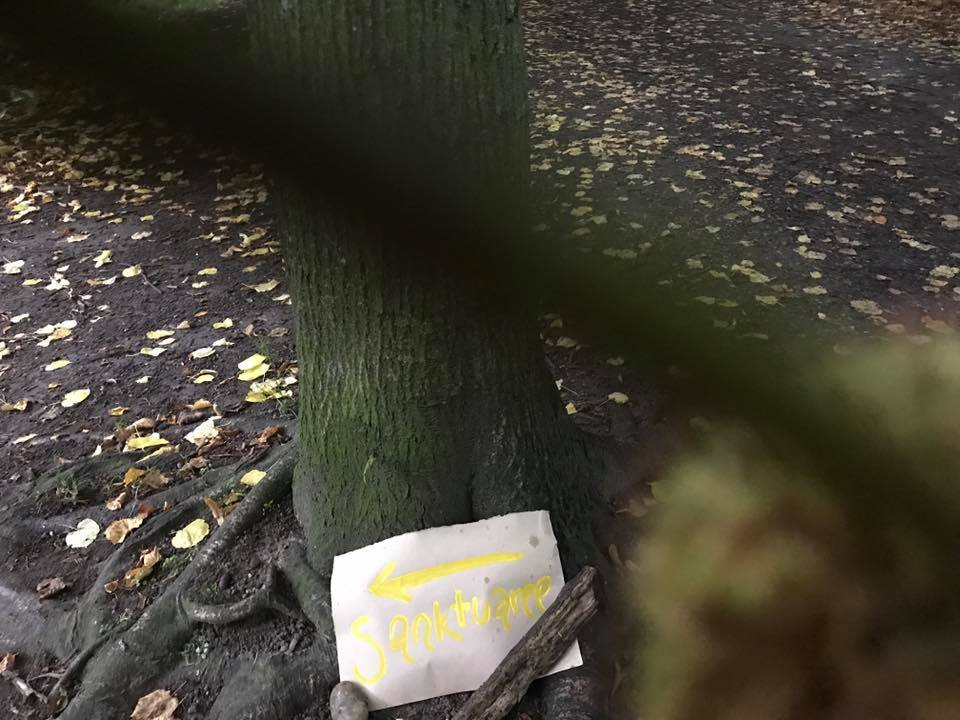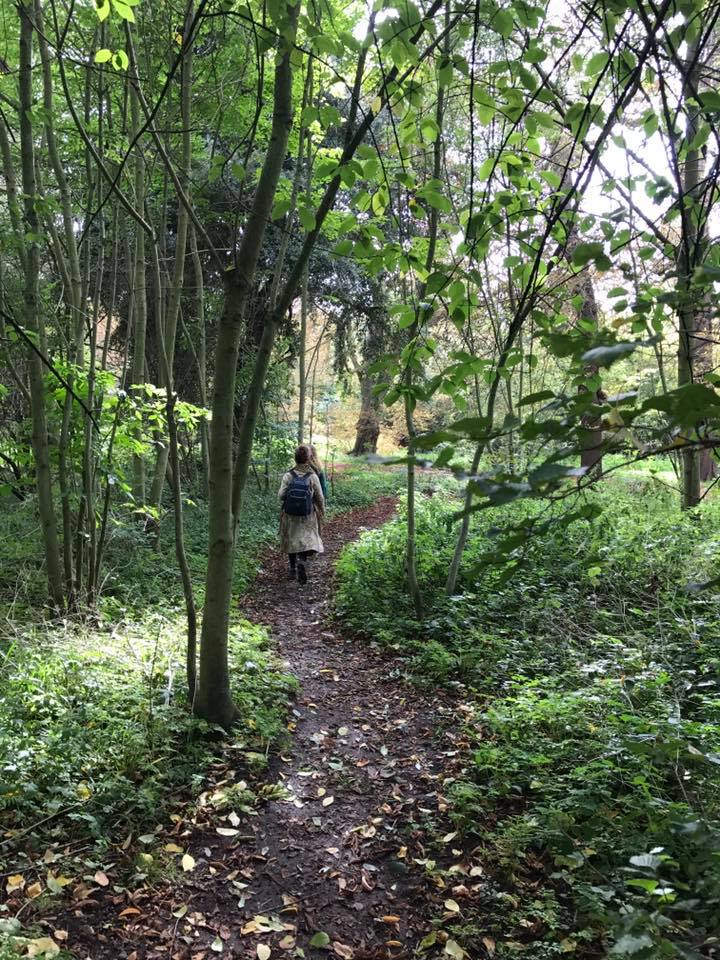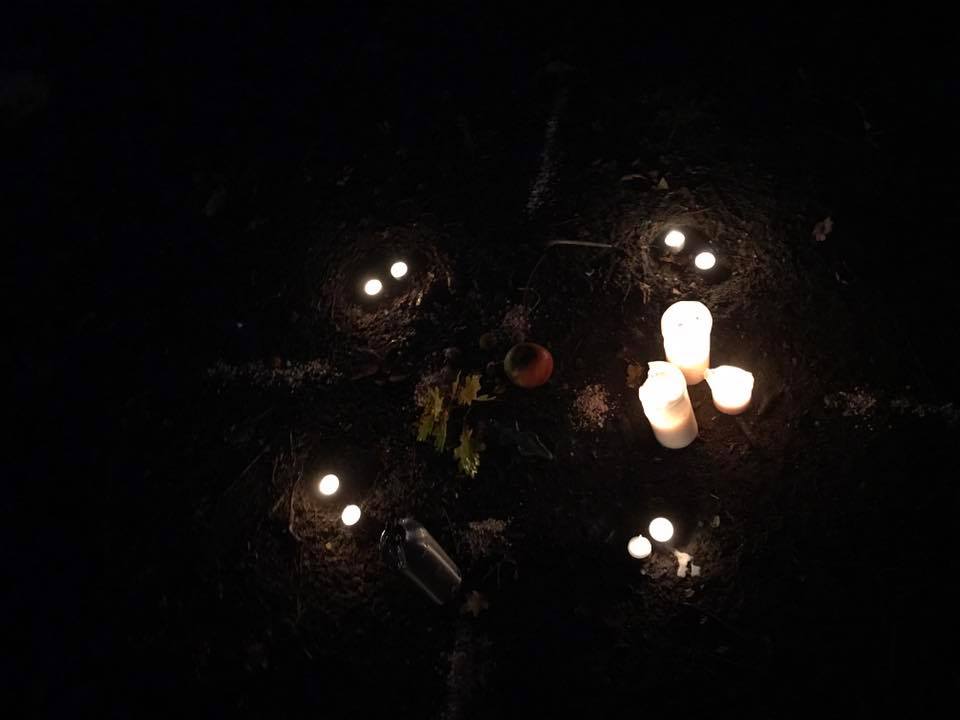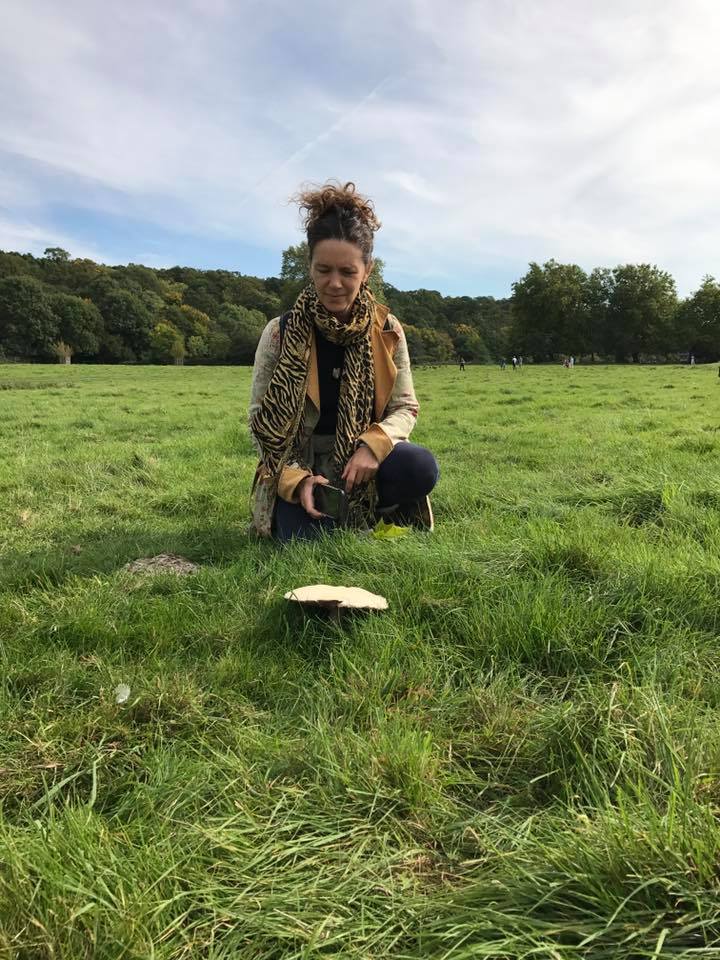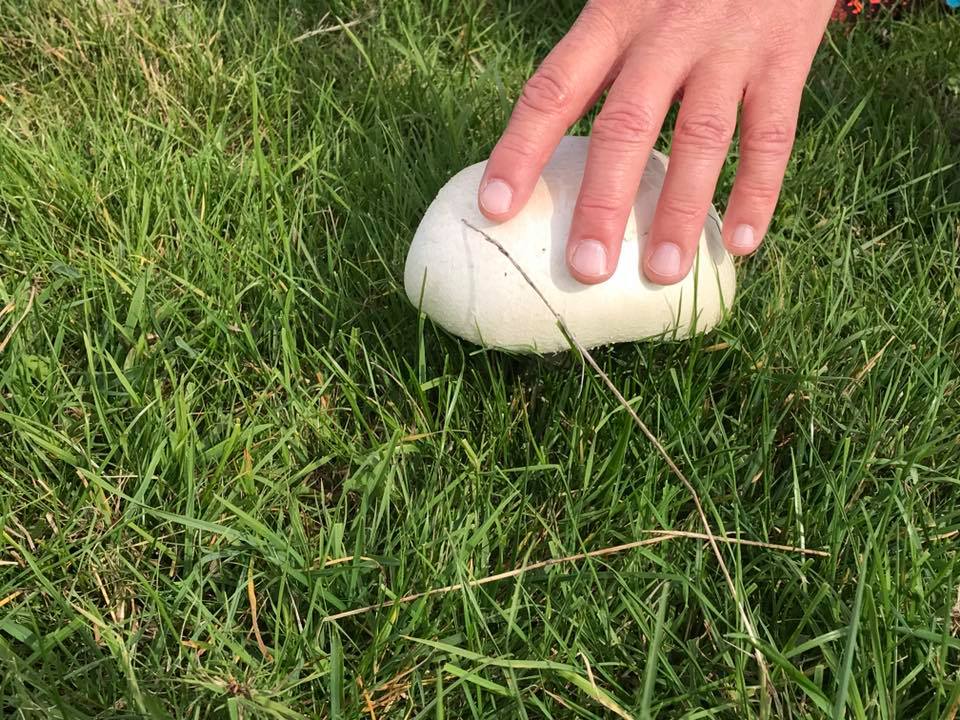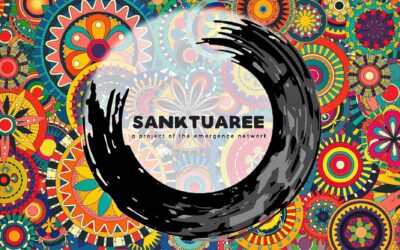
Sanktuaree Project Description
In these polarizing times, when the boundaries between us are getting angrier, and when it seems contemporary politics only adds to a culture of divisiveness, we claim sanctuary. Or rather, we re-claim Sanktuaree! Sanktuarees are circles of practice that teach us to wait at the edges of what it means to be neighbours, to be citizens, to be human. Sanktuarees bear the implicit idea that the borders are vibrant places, and that we are produced by intersections and the grotesque.
The generative ritual of Sanktuaree invites us to pay attention to the ways we collectively perform the normal, and to make room for other places of power as we welcome the outlier, embrace the irregular and weird, and stitch a politics of the impossible. Sanktuaree is a form of contemporary asylum-giving, except the recipients here are rivers, human others, trees, the marginalized, and even conversations we would normally refuse to have. It’s about making the ‘radical other’ safe, warm, forgiven and at home.
Sanktuaree is decolonization work. The ideas of home and belonging are central to it.
Basically, a Sanktuaree is an exploration into who we are, and an accounting for our place in the world. It is about how the ‘other’ is already a part of ‘us’. A Sanktuaree could be anything. It could be about gardening, making a meal together, sun-gazing while sitting at the corner of a street, gifting circles, dancing or writing together once a week. There is no appreciable limit to what a Sanktuaree could be. At the heart of the ritual is the vocation to identify a ‘radical other’ (any being that answers the question: who do I see as different from me?) and make them welcome. This is radical hospitality. It is about opening space for the unexpected, and exploring together – in modest, shared projects – how we are entangled with one another. A Sanktuaree is a dispatch sent out to the world – a way of saying that we recognize how interconnected we are to those ‘outside’ of our circles, and a way of responding to that impulse.
In 2017, inspired by the ancient practice of providing a safe space for the distressed and reworked as a safe enunciation of the sacred in times of disenchantment, Báyò Akómoláfé and TEN curators Gaby Franco and Yeyo (Sergio) Beltrán, along with Dominic Dibble of World Goodwill, and many others including Red K. Elders, Blake Ludwig, and Rachel Castagne co-created Sanktuaree! Carnival London.
Sanktuaree was a frontier event, an intercultural festival, designed to inspire exploration of the conditions that maintain our social order and invite new practices that help us make kin with the world, with place, and with each other. From September 21-24, 2017 a London-based local team, supported by ten put together this carnival for the invisible, an invitation to co-enact other places of power!
‘Sanktuaree (Festival of the Invisibles!)’ was an embodied approach to a world that is surprising and alive. It was nourished by the notion that politics can be about gifts, about meeting the “other” as a sacred sibling; it need not be strictly about voting and electing officials into power. Sanktuaree said, “We have tried everything we know to do, now we must try the impossible.” It grew upon indigenous notions of weird causality, as a different ethos of responding to crisis.
The dream was to work with artists, practitioners, veteran activists, dancers, scientists, and those who were working “in service of the otherwise” to “hack” the parameters of the normal in lively, multi-event, pedestrian enactments scattered around the city of London. The longing was to offer a political moment that turns to the invisible, that turns to the edges, and seeds different possibilities in the lives of passers-by.
During those days, right there on the streets of London, there were silent gatherings, grief ceremonies, hugging meditations, sitting with trees and rivers, dance flash mobs, conversation circles and even a Karma Kitchen experiment. Imagine looking out your window (if you live on a busy street in London), and instead of the anonymity of people trying to get somewhere, you see people dancing together or even having a picnic with strangers. The idea was to turn protest dynamics on their head, to gather together without assembling into one giant clump of people. This was not an activism of demands (as important as that is); it was an activism of smiles and celebration and reclaiming the commons… it was meeting each other in new ways to insist that even in huge cities, enchantment is not in short supply.
The principal ten curators for Sanktuaree were Sergio (Yeyo) Beltrán, Gaby Franco and Báyò Akómoláfé.
Sanktuaree: Festival of the Invisibles!
Sanktuaree [ten artifacts] The generative ritual of Sanktuaree invites us to pay attention to the ways we collectively perform the normal, and to make room for other places of power as we welcome the outlier, embrace the irregular and weird, and stitch a politics of...




